See Glaciers, Gauchos, and Prehistoric Paintings in Chile's Most Beautiful National Park
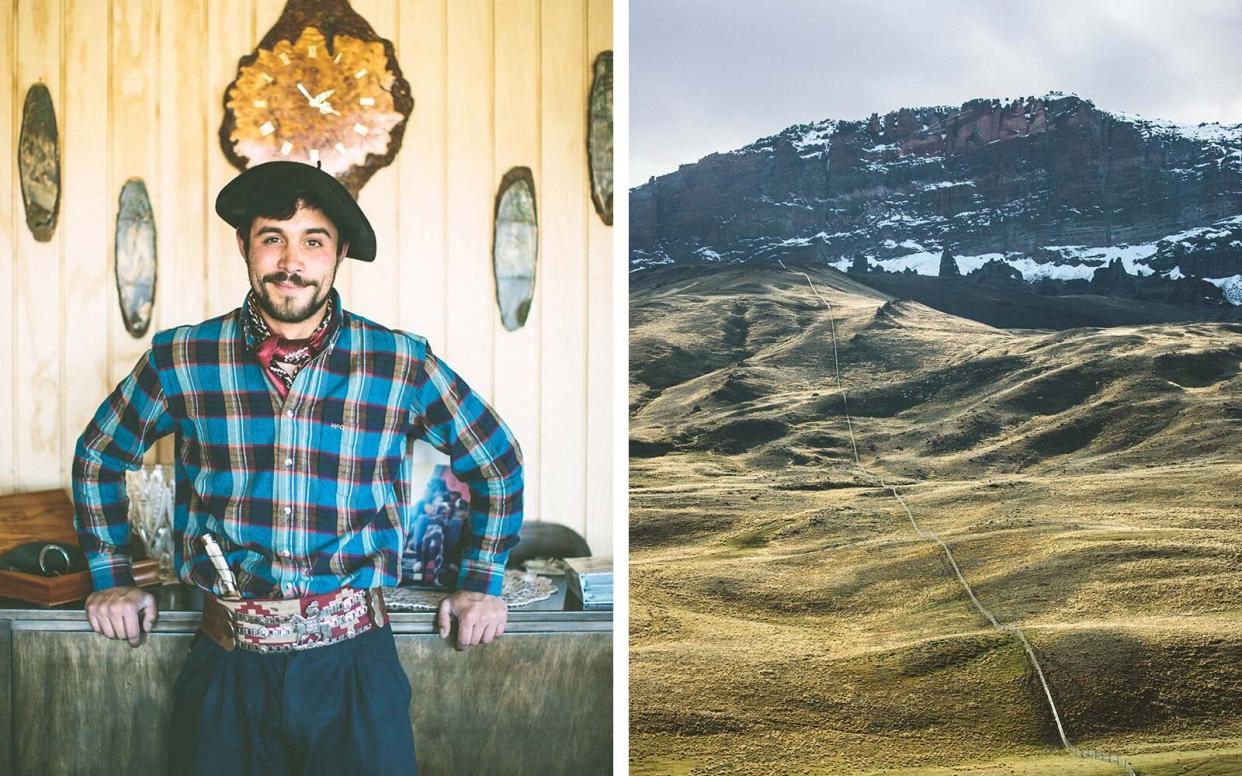
Michaela Trimble
Towering mountain ranges, cascading waterfalls, hanging glaciers, and a system of trails weaving through steep moraines are just a few of the wonders you can expect to find while exploring Torres del Paine National Park. Set in Chilean Patagonia, the area offers adventures like horseback riding with gauchos and hikes to discover some of the country’s oldest artifacts from Chile’s first inhabitants.
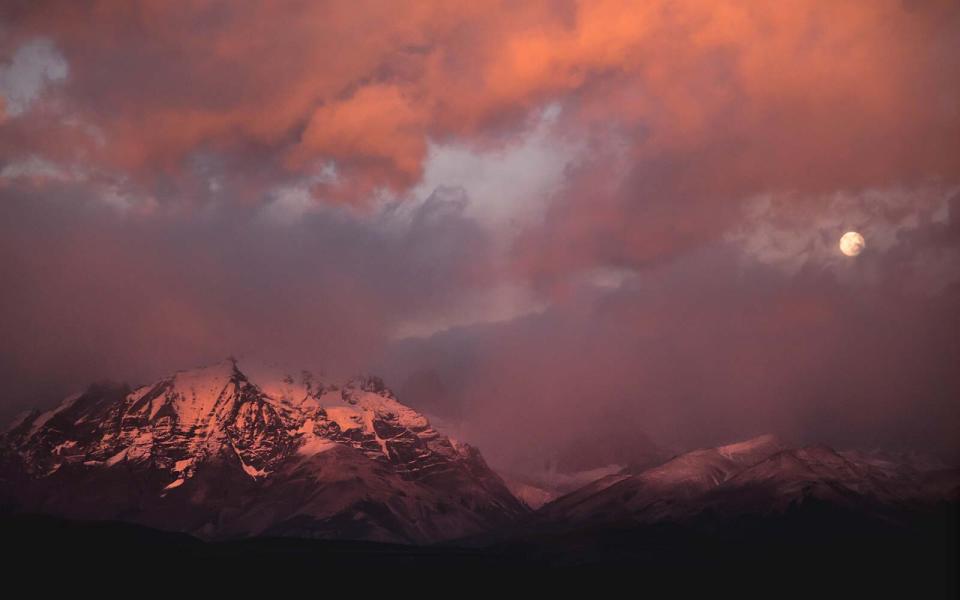
Michaela Trimble
Planning a trip to Patagonia can seem like quite the challenging feat, as you’re going to the bottom of South America where weather conditions tend to change on a whim. The best time to go is during the summer, from November to early March, as temperatures are high and you have the chance to explore even the most arduous terrain. No matter when you choose to visit, be sure to bring layers, as extreme fluctuations in temperature tend to occur throughout the day, especially when hiking to varying altitudes.
Related: More Latin American trip ideas
For a luxurious stay, book one of 14 villas at Awasi Patagonia, the world's southernmost Relais & Chateaux hotel. The lodge operates on a private-guide system, so you can explore at your own pace and visit the sites you want, when you want, and for however long you want, without the intrusion of other travelers. Located a short drive from Awasi Patagonia is EcoCamp Patagonia, the ideal starting point for travelers aiming to hike the famous W trek, which takes 5 to 7 days. Stay at the property’s own mountain huts before embarking along the route, resting in the park’s campsites each evening.
Set in the middle of the park on the shores of Lake Pehoé is explora Patagonia, a property offering over 40 guided hikes and horseback rides for both novices and experts. If you have your sights set on the area’s plentiful fly-fishing opportunities, perhaps a stay at Tierra Patagonia is the best choice. Set on a bluff near Lake Sarmiento, the restaurant at this 40-room lodge will prepare your catch for you, complete with the best wines in Chile.
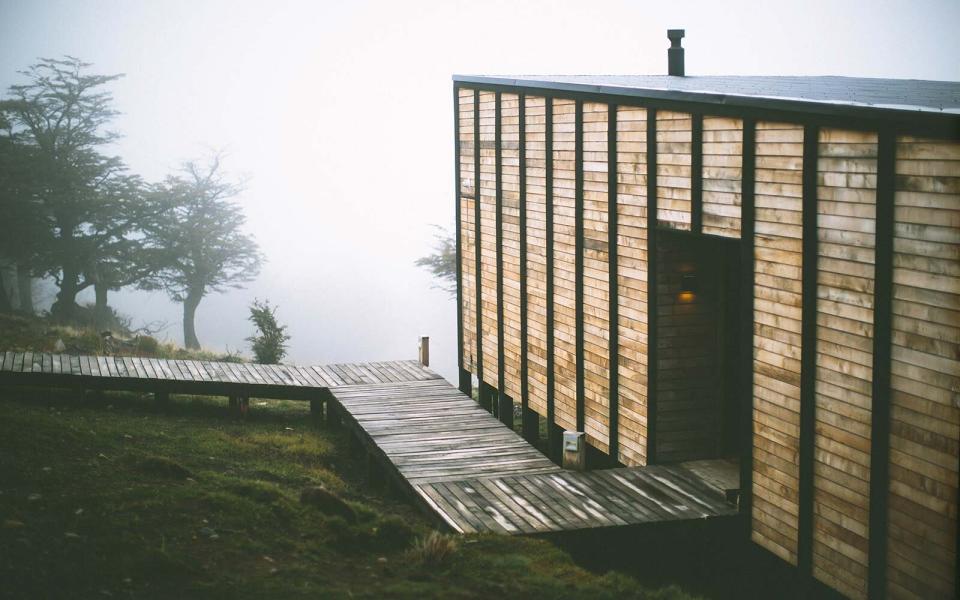
Michaela Trimble
No matter when you choose to go or where you choose to stay, Torres del Paine National Park offers endless adventures for intrepid travelers. These are the sights you can't miss in this stunning national park.
Grey Lake
Whether you kayak, canoe, or boat across its glacial-fed waters, visiting Grey Lake (an international biosphere reserve) is sure to be one of your best experiences in Torres del Paine National Park. Formed by the Southern Patagonian Ice Field, Grey Lake offers the perfect mirrored view of the famed Paine Massif; but perhaps the most striking feature of Grey Lake is Grey Glacier, one of the smallest, yet most stunning glaciers in the region.
Grey Glacier
As the postcard icon of Grey Lake, Grey Glacier is the prize of the Grey Peninsula. Also formed by the Southern Patagonian Ice Field, the world’s second largest contiguous ice field outside of the poles, Grey Glacier is located west of the Paine Massif and extends for nearly 12 miles. On a boat excursion to Grey Glacier, you can get up close to the formation’s towering blue ice walls. You may even have the chance to walk on the glacier’s own island, called a nunatak, which divides the glacier in two.
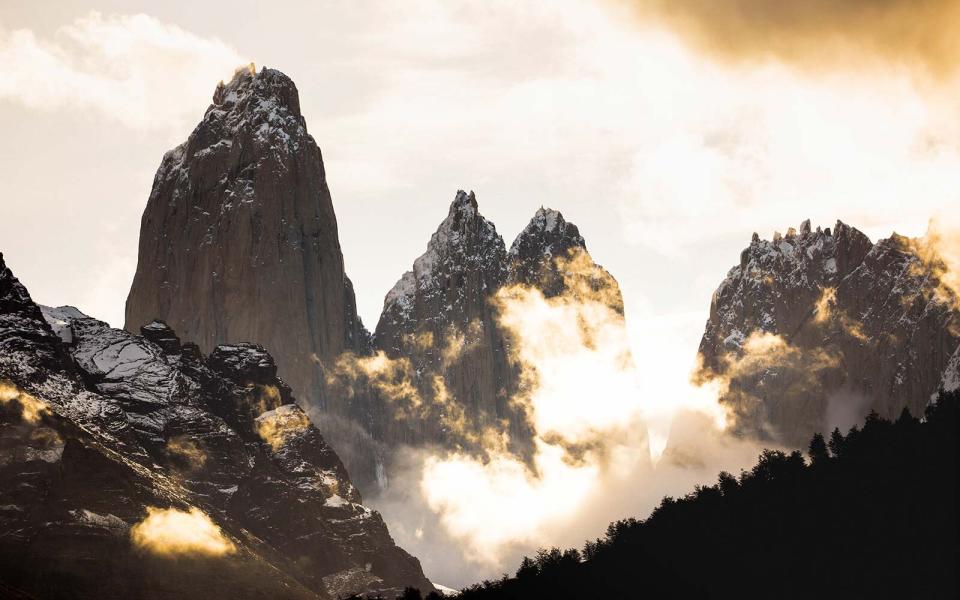
Michaela Trimble As you climb higher in the Ascencio Valley, you’re well on your way to witnessing the stunning eastern face of the famed Las Torres, or towers, of Torres del Paine. Beyond a gradual ascent of mountain ridges, beech forests, and small rivers, this moderate hike becomes rigorous. After a steep scramble up loose moraine, you will finally reach the base of the towers, the perfect point to marvel the granite monolith triumvirate, which stands nearly 6,500 feet in the air and spans 12 million years of geological history. If you’re lucky, the day will be clear enough to see the glacial blue pool below the towers.
Las Torres Base Hike
As you climb higher in the Ascencio Valley, you’re well on your way to witnessing the stunning eastern face of the famed Las Torres, or towers, of Torres del Paine. Beyond a gradual ascent of mountain ridges, beech forests, and small rivers, this moderate hike becomes rigorous. After a steep scramble up loose moraine, you will finally reach the base of the towers, the perfect point to marvel at the granite monolith triumvirate, which stands nearly 6,500 feet in the air and spans 12 million years of geological history. If you’re lucky, the day will be clear enough to see the glacial blue pool below the towers.
Lake Pehóe
Fed by glaciers and located in the center of the park, Lake Pehóe is the picture-perfect foreground to the range’s stunning sunrises and sunsets. From the glassy shores, you can glimpse the Paine Massif and Los Cuernos, the iconic horned range. While water sports aren’t the main prize of icy Lake Pehóe, the views are. Wind gusts often sweep through the lake, causing stunning tornado-like phenomenon to appear in gusts along the water. Visit nearby sites like Salto Grande waterfall to the northeast and Salto Chico waterfall to the southeast.
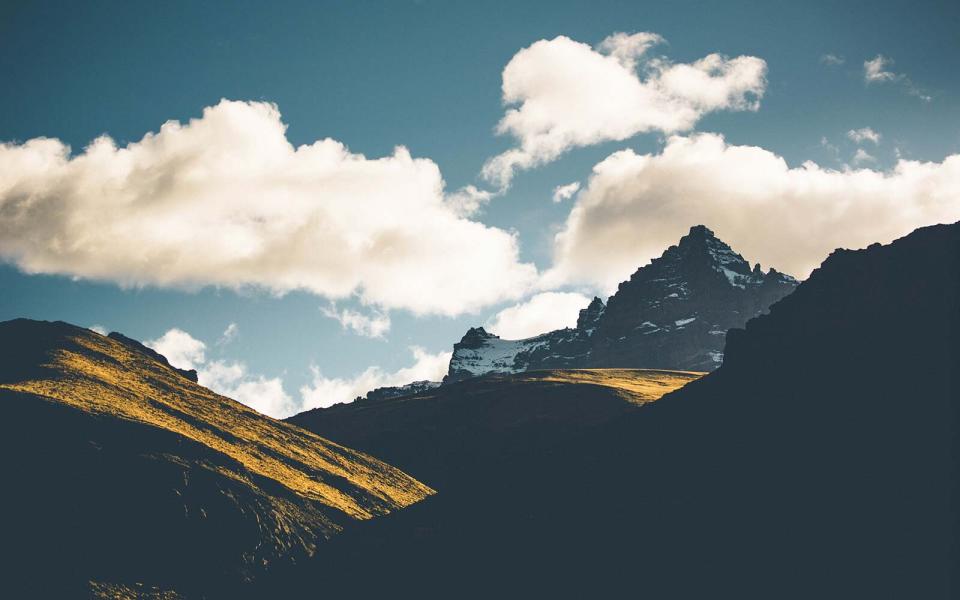
Michaela Trimble
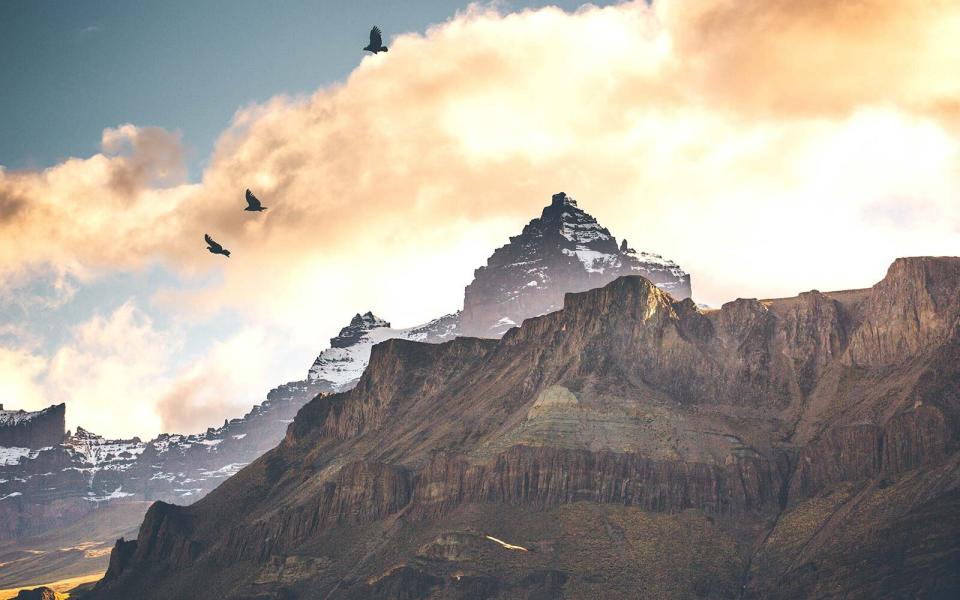
Michaela Trimble
Paine River and Salto Grande Waterfall
Hold onto your hats at this park stop: whipping wind and surging water merge to form the Paine River’s Salto Grande. The main river flowing through the park is at its most beautiful at Salto Grande; while the waterfall steals the show, keep your eyes peeled for the wildlife species that flock nearby — you may see a group of guanacos grazing. Wild relatives of llamas and alpacas, guanacos are fond of these wetlands, as are their foremost predator, the puma. Both are found here, as well as foxes and endangered Chilean huemul deer.
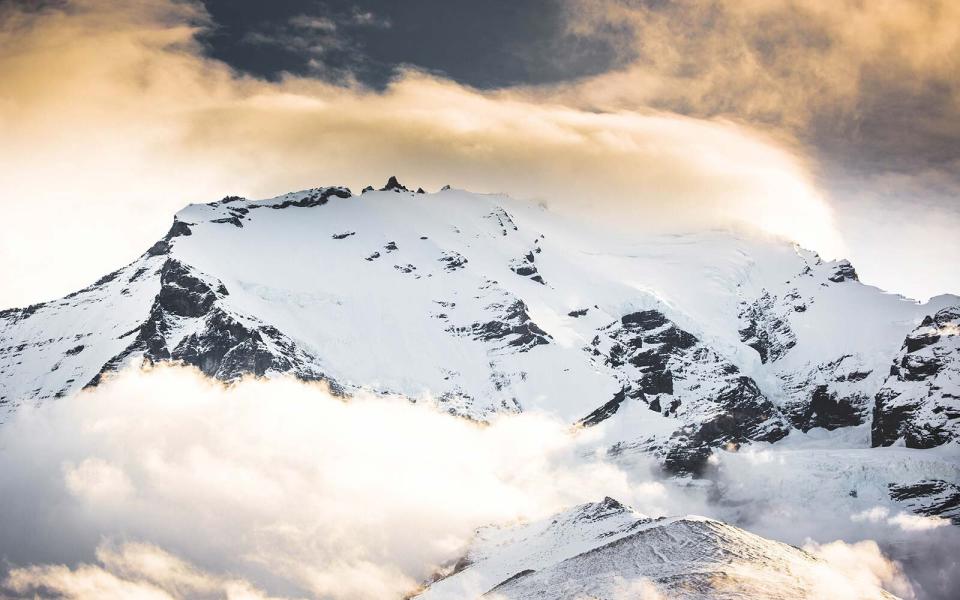
Michaela Trimble
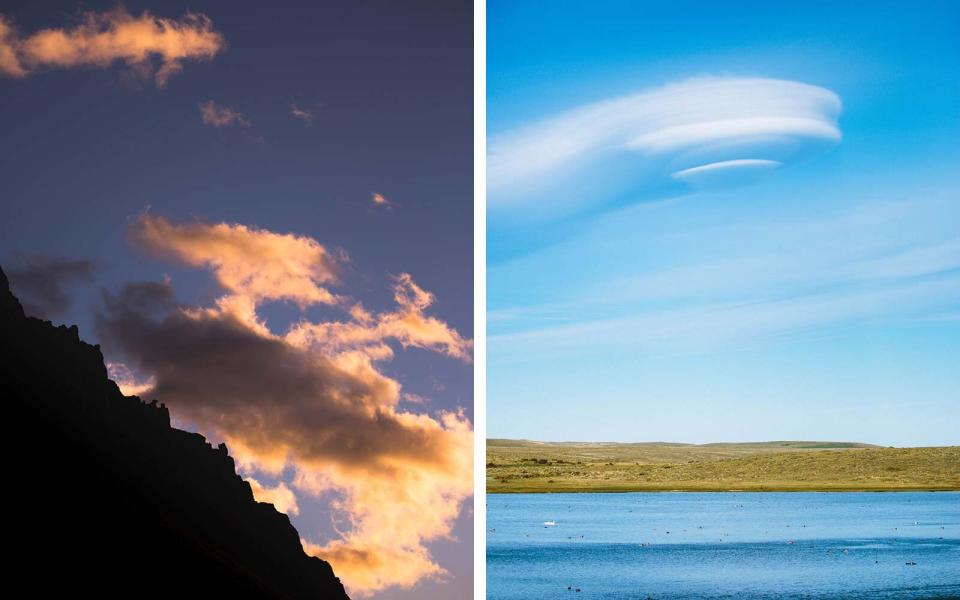
Michaela Trimble
Frenchman’s Valley and Los Cuernos
A highlight of the Torres Del Paine W trek, Frenchman’s Valley is best viewed up close. On a day hike, hitch a catamaran ride across Lake Pehoé to the valley’s base. Climb the steep moraines to the foot of the hanging French Glacier. If you’re lucky, you may witness ice calving from the structure as chunks of ice fall from the glacier. Continue skyward to the Los Cuernos peaks, which form a ring around the natural basin. Once at the top, imposing peaks and immense granite rock walls abound.
Fauna Trail
The Fauna Trail (often called the Nomad Trail) is a walk that reveals what life was like for the park’s earliest inhabitants. As you walk along the vast steppe that was once traversed by the ancient Tehuelches, you'll find a small cave. As you explore the cave adorned with pictographs from the nomadic indigenous people who once lived here, marvel at the paintings depicting guanacos, a mysterious figure, and stenciled hands. The prehistoric paintings are thought to be up to 8,000 years old.
Laguna Azul
An easy, one-hour hike takes visitors to Laguna Azul, a lake with some of the best views of the Paine Massif. Much of the park’s birdlife flocks near the lagoon, including geese and ducks. Hikers often report sightings of guanacos and ñandús, a bird that's similar to an ostrich.
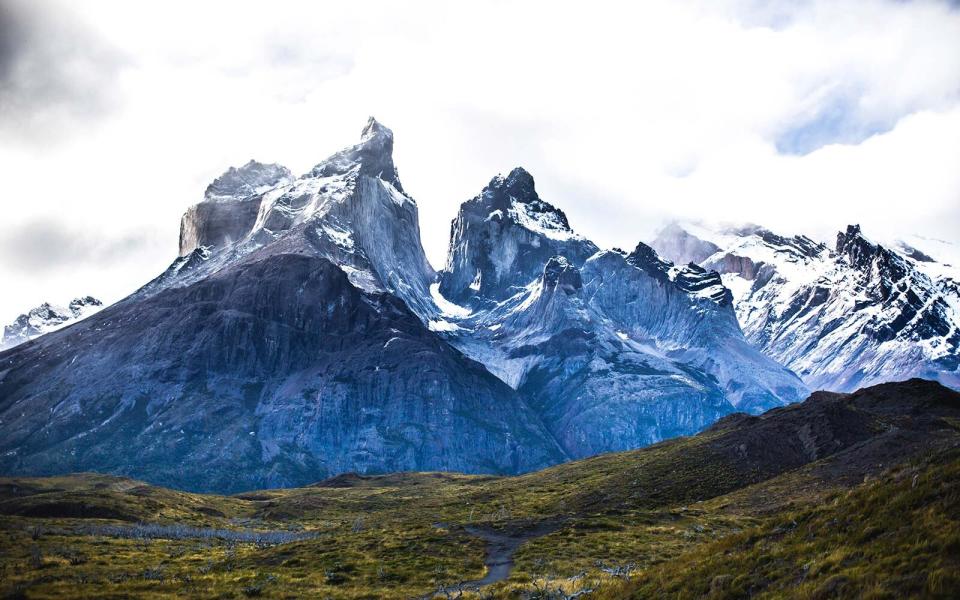
Michaela Trimble
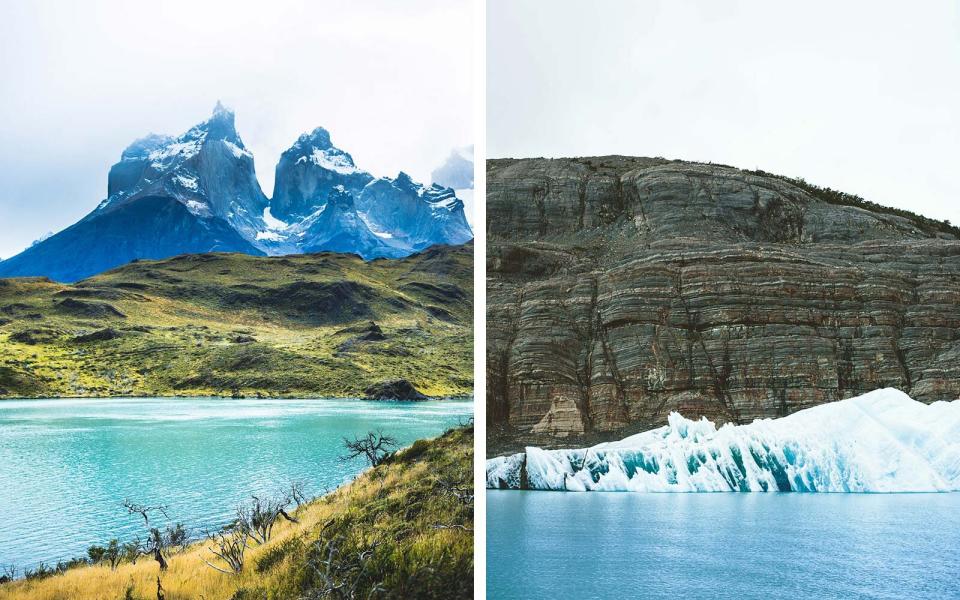
Michaela Trimble
Sierra Baguales Fossil Trail
While Sierra Baguales is technically outside of Torres del Paine, it’s well worth a visit. Whether you prefer to take a horseback ride at a local estancia or mountain bike through the area’s undulating hills, Sierra Baguales is sure to impress. To hike the area’s Fossil Trail, enter the La Cumbre-Baguales Geological and Paleontological Park along the banks of the Baguales River. Here, amidst the trail’s deep valleys and cliffs, find shark teeth, mollusks, and other fossils of marine fauna that once flourished in the Atlantic Ocean nearly 23 million years ago.
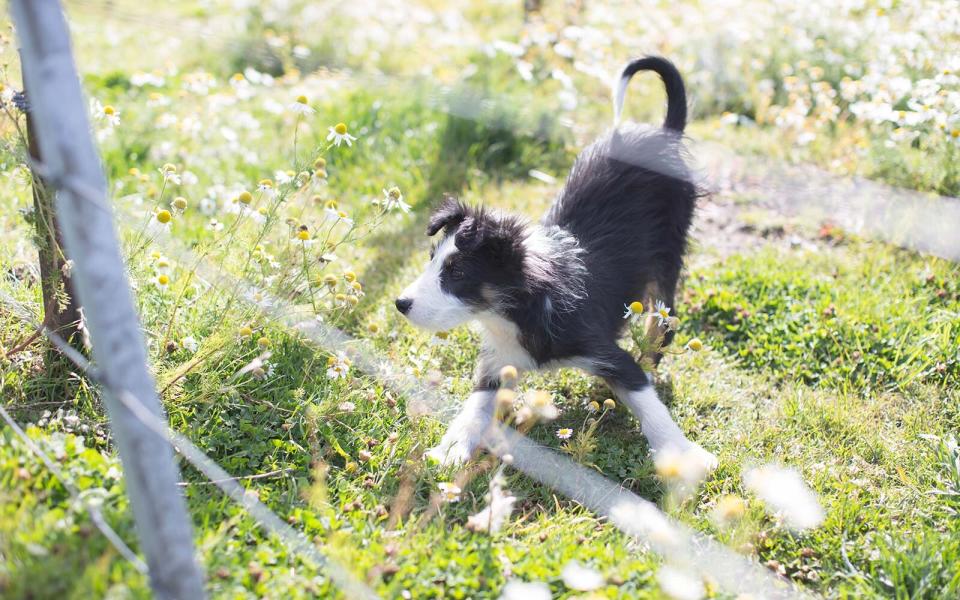
Michaela Trimble
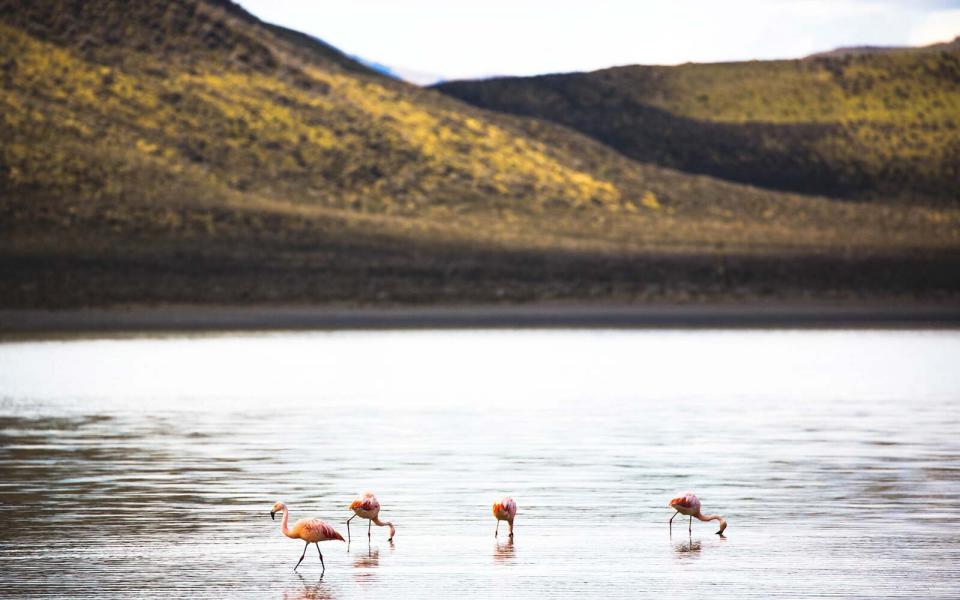
Michaela Trimble
Sarmiento Lake
Unlike Torres del Paine’s glacial lakes, Sarmiento Lake is derived from rain water, which causes its deep blue hue. This lake is at the epicenter of the area’s mountains and wildlife, a natural paradise with calcium carbonate thrombolites (rare fossils depicting the earliest days of life on our planet) on its white shores.

